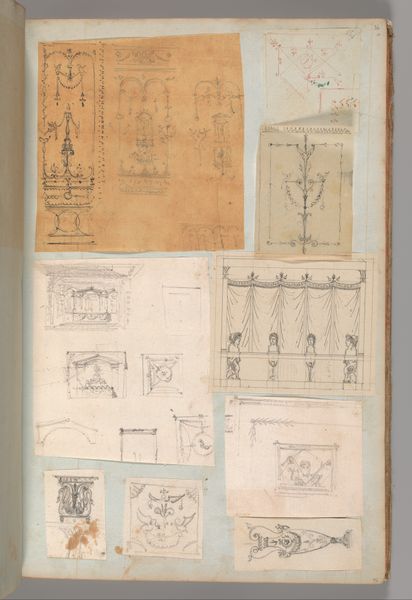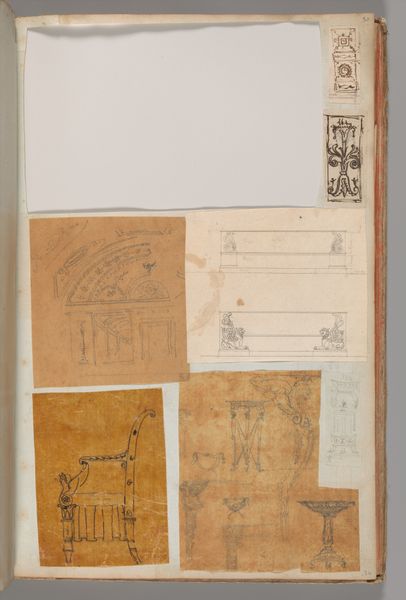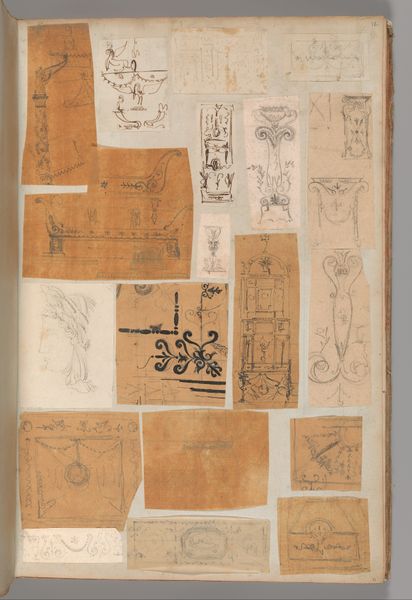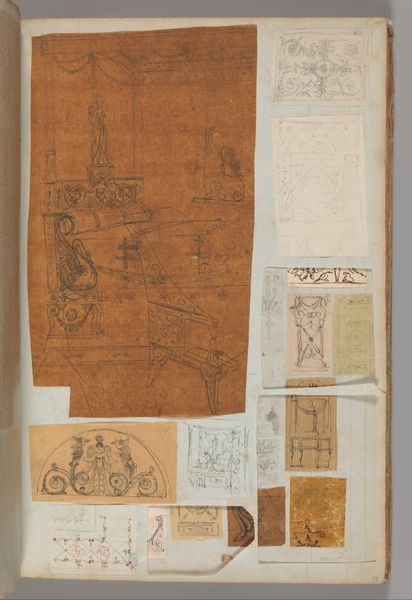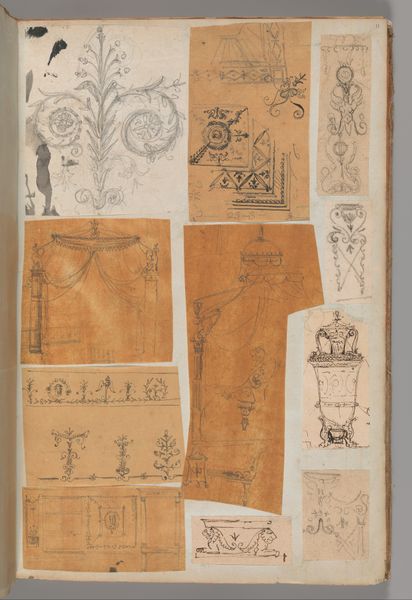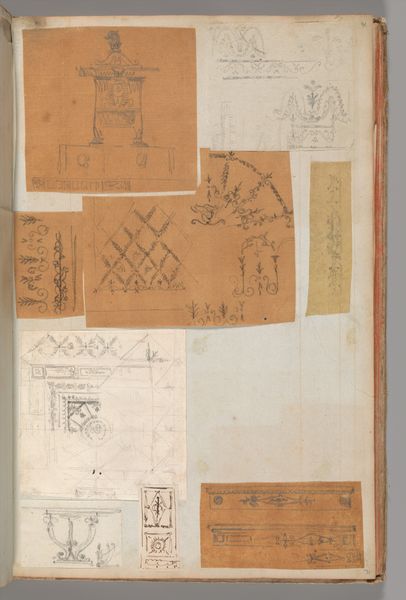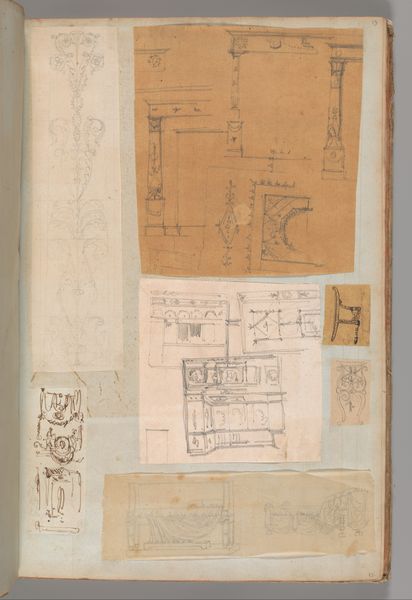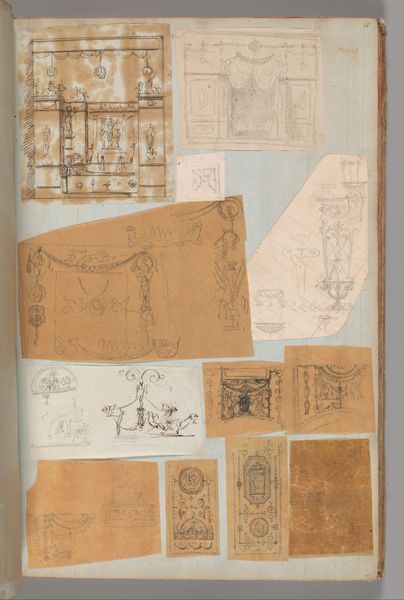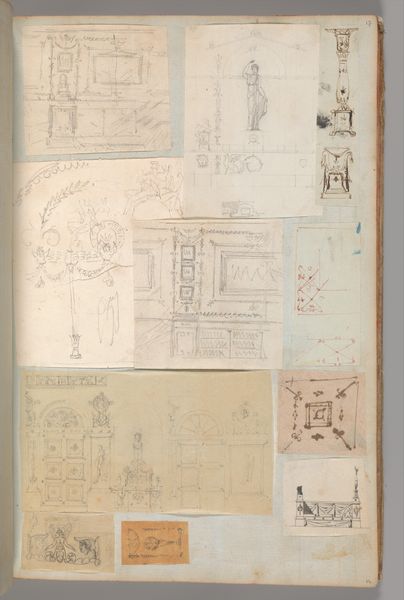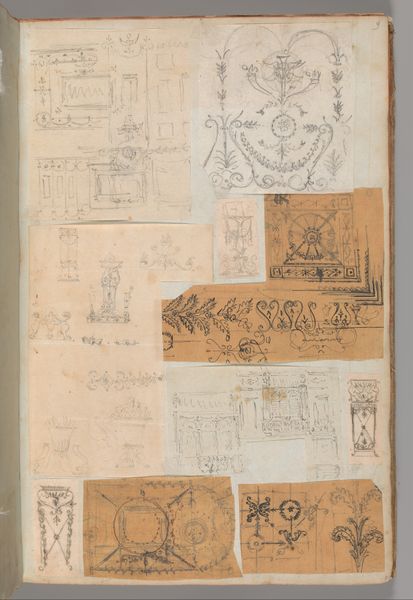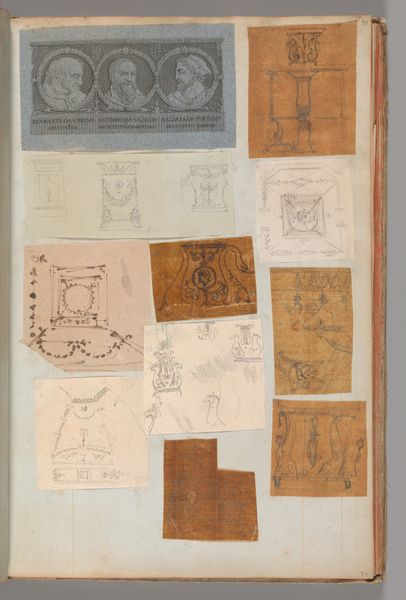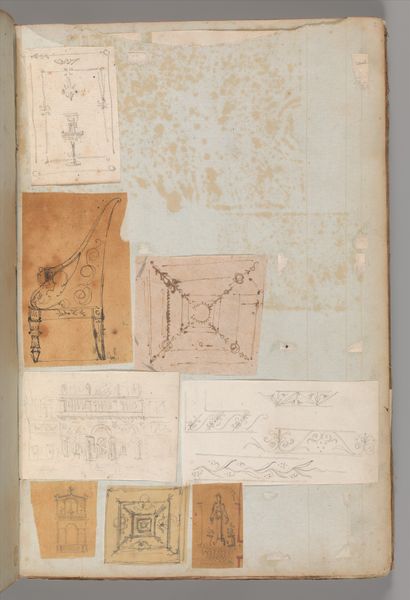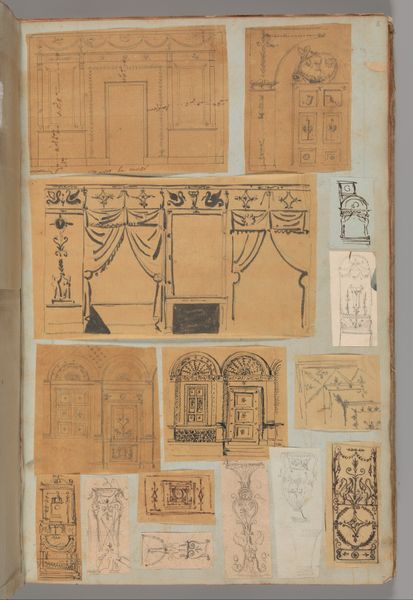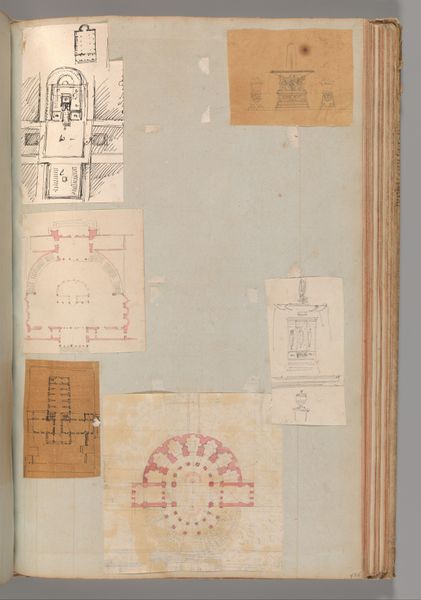
Page from a Scrapbook containing Drawings and Several Prints of Architecture, Interiors, Furniture and Other Objects 1795 - 1805
0:00
0:00
drawing, print, paper, ink, architecture
#
drawing
#
neoclacissism
# print
#
paper
#
ink
#
architecture
Dimensions: 15 11/16 x 10 in. (39.8 x 25.4 cm)
Copyright: Public Domain
Curator: Well, isn’t this intriguing? A page pulled straight from the dreams of an architect, seemingly. "Page from a Scrapbook containing Drawings and Several Prints of Architecture, Interiors, Furniture and Other Objects", dating back to somewhere between 1795 and 1805, crafted by Charles Percier, using drawing and print, ink on paper. The Metropolitan Museum of Art has this peek into the architect's mind. Editor: Oh, it’s like stumbling upon someone’s visual diary, a very elegant one at that. My immediate sense is order and precision. All those carefully rendered architectural details crammed onto the page evoke an age obsessed with form and balance. There's almost a melancholic grandeur about it. Curator: Absolutely. Percier, as a key figure in the Neoclassical movement, was shaping the look of Napoleonic France, and beyond. These scrapbook pages weren't just sketches; they were prototypes of a new aesthetic order, drawing inspiration from ancient Rome and Greece to legitimize a modern empire. Editor: It's interesting you frame it as empire-building through design. I see these tight arrangements, the mix of scales and textures, and think more of a quest for aesthetic control, maybe even perfection. The crisp ink lines attempting to tame these intricate designs almost mirrors societal attempts to dictate beauty. Curator: Perhaps both. But, consider the time; France was actively redefining itself politically and culturally. Spaces like these were meant to be experienced as embodiments of civic virtue, and this idea trickled all the way down to furniture design, with interiors becoming stages for displaying the state’s magnificence. It was design as propaganda! Editor: I concede that point, of course. Still, looking closely at these various renditions on display, these fragmented ideas almost gives them a very ephemeral quality, contrasting strongly with the long-lasting structures Percier would have envisioned. The faded tones, all in this seemingly careless composition of interior design. Curator: An excellent point to remind us that this is a personal glimpse. It lets us into the generative processes that would result in imposing spaces across the continent, blurring lines between private thoughts and public spectacle. These fragile pages were instrumental in setting the stage for how power presented itself visually, but there is an undeniable intimacy that remains palpable in these works. Editor: Exactly, there's this delightful tension at play – between intent and impression, between classical aspirations and ephemeral execution. Gives you pause.
Comments
No comments
Be the first to comment and join the conversation on the ultimate creative platform.
